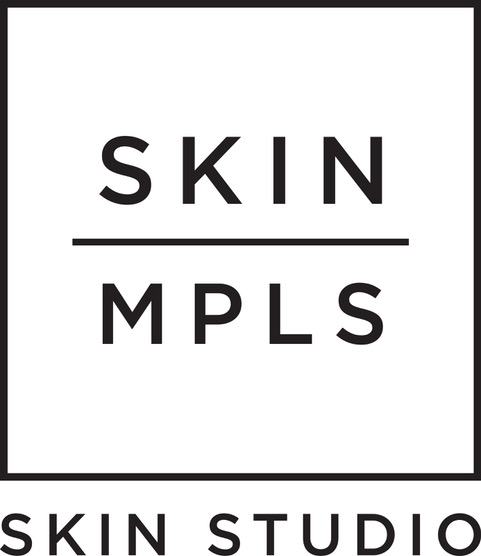What’s Up With Fungal Acne?
Fungal acne is acne caused by fungal overgrowth instead of bacterial overgrowth. Sometimes, people obsess over what kind of acne they have, which can hinder its treatment. And, often, those who have fungal acne may also have “regular” acne too. So, over the years, we have been reluctant to cover fungal acne. However, some essential advice for treating fungal acne is worth mentioning. Plus, the tips for clearing fungal acne will also help regular acne – since you can have both types at the same time. With all acne, but especially fungal, sometimes what you don’t do is more important than what you do. Read on to understand the nuances.
You can suspect your acne is fungal if you meet some or most of these criteria:
You do hot yoga, lots of saunas, or sweat daily
You see acne in your hairline, on your temples, between your brows, or where you wear a hat or bra straps
Your acne is itchy, bumpy, and doesn’t extract well
Your acne doesn’t form a head or go away – it just stays around
You suspect digestive problems like candida or yeast overgrowth
Fungal acne is called “malassezia folliculitis.” In most ways, it is treated with the same principles as bacterial acne breakouts. The main difference is that you use mandelic acid instead of benzoyl peroxide and exfoliants like retinoids because of its antifungal properties. Too much BP or exfoliation can aggravate fungal acne. Below we’ve highlighted the most universal regimen for treating it.
How to treat fungal acne
The first step is to get certain fungus-feeding ingredients out of your routine and mandelic acid into your routine. We highly recommend Vivant Skincare’s mandelic acid because it is of USP (United States Pharmacopeia) quality and in the best formulation, so you know it will penetrate your skin well. Additionally, it’s formulated without any other pore-clogging or filler ingredients. Now that mandelic acid is more popular, there are different products on the market – but when you use Vivant Skincare, you know it will work. The benefit of mandelic acid, which we’ve coined “the friendliest acid,” is that it is anti-fungal, antibacterial, anti-inflammatory, and it exfoliates dead skin – so it treats literally every skin type and skin concern.
Let’s say you workout a lot, sweat a lot, and are concerned you may have fungal acne. You should start with a gentle 4-step routine and focus on cleansing your skin (and body) immediately after working out. Start with a routine like Green Tea Cleanser, Raspberry Clarifying Pads (if you’re on the oil-rich side) or Triad Pads (if you’re on the drier side), 15% Mandelic Acid Serum, and a lightweight moisturizing SPF like Triple Prep Daily Moisturizer SPF40. Too much moisture may feed the fungus overgrowth, but dehydration will lead to an unbalanced skin biome that could cause more problems. Sweating actually dehydrates your skin because of a process called TEWL (transepidermal water loss). While lots of water can help your body, your skin needs topical hydration like aloe or hyaluronic acid, so a good moisturizer for fungal acne is hydrating first and then moisturizing second. But here’s a complete list of fungal acne-safe products that we carry.
Take a break from hot tubs, saunas, and steam rooms if you can. While those can have detox and health benefits, they can also aggravate fungal acne so it’s best to hold off at least until things feel under control. You can then attempt to start back up again and see if your skin flares again.
Avoid all pore-clogging ingredients
The best way to avoid pore cloggers is to stop experimenting with what you put on your skin. You can find pore-clogging ingredient checklists out there, but they tend to do more harm than good because they give false information or lead to thinking you can use any product as long as its ingredients are “acne-safe.” The truth is that everything we put on our skin impacts our skin biome, so, theoretically, even acne-safe products can still prolong acne, especially stubborn fungal acne. Besides, using a product that doesn’t properly exfoliate or hydrate your skin is a missed opportunity.
What about makeup? Use a loose mineral powder like Bare Minerals Loose Original Powder Foundation or Priia Cosmetics Foundation. Avoid concealer and make sure your blushes and bronzers are acne-safe, too. Wash your makeup brushes once a week with your face cleanser, and don’t work out in your makeup.
Ensure you don’t use dryer sheets and wash your face and back after using hair conditioner in the shower. Sleep with your hair off your face and change your pillowcases weekly. Spray and wipe your sports equipment (like hats and helmets) with alcohol, and you can use vinegar, enzymes, or bleach in your laundry to get your workout clothes extra clean.
With the mandelic acid-based regimen above, you will see results on fungal or regular acne – but without cutting pore-clogging triggers and focusing on long facial cleansing, you will not get fully clear. Homecare, no pore-cloggers, and good hygiene habits are the key components in improving your fungal acne since facial treatments are more aimed at exfoliation, which is better for traditional acne and can sometimes aggravate fungal acne. However, a trained aesthetician can still do good work on your skin and, most importantly, guide you to the right treatment plan – so booking a refine50 treatment or a back clear30 treatment is also helpful.
